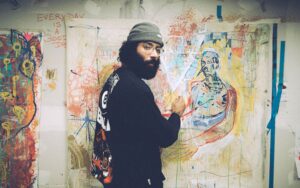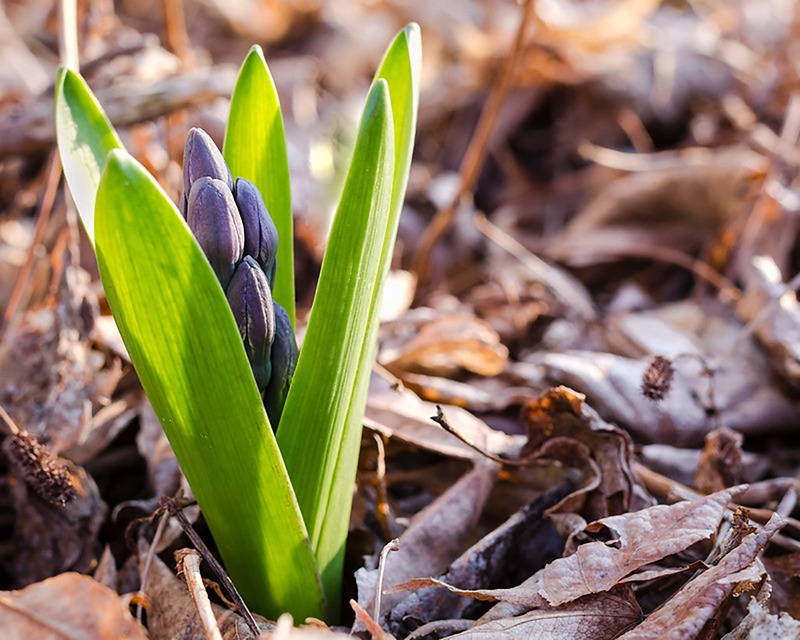
Editors’ note: This article from the fall 2018 edition inaugurates the Nonprofit Quarterly’s “Racial Equity Change Process” series. We offer the stories with full knowledge that we are recording the histories of these efforts from the points of view of the participants, who may have their own recollections about how the processes in their organization developed and resolved. We hope these stories provide insights into how various kinds of nonprofits can create their own transformative processes, and we welcome you to share your own racial equity change process with us by submitting to [email protected].
How It Started
The Business Alliance for Local Living Economies—or BALLE, as it is known—is a seventeen-year-old national organization with the simple and powerful mission to “create local economies that work for all.” A commitment to this mission has taken BALLE on a journey that is transforming it into an organization that made the choice, in 2011, to center racial equity in its work. Now, seven years later, NPQ has spoken with some of the key leaders in this change to learn what sparked it, how it developed over time, and where the organization is today.
But first a little history. When BALLE was founded in 2001—by Judy Wicks (owner of Philadelphia’s White Dog Cafe, and creator of the Sustainable Business Network of Greater Philadelphia) and Boston local business owner Laury Hammel—its initial model was to support, help launch, and recognize and learn from the efforts of Local First networks, which it called “a foundational concept of the emerging new economy movement.” (In fact, BALLE claims to have coined the term Local First, in 2002.1) As these networks grew and learned from each other, the movement gained steam, and by 2002, BALLE was hosting its first (and now annual) national conference. By 2009, BALLE consisted of eighty Local First business networks across North America.
However, while networks serve many purposes (including connectivity, learning, and action), they also tend to be self-reinforcing, in that the trust and knowledge that are built over time privilege those already in the network, and can create obstacles to openness, innovation, and access. Michelle Long, who had been BALLE’s founding director, came back to BALLE in 2010, in the midst of inquiry and a strategic planning process that involved looking back at the organization’s first ten years.2 As Long described it:
We looked around and everyone was white and middle class in the network across North America. It didn’t reflect North America. That was obvious. So we said, okay, what we built so far was not inclusive to, attractive for, supportive of people of color. It was only attracting white, middle-class people. It was a big flag. We knew we couldn’t build an economy that works for all if only a few are represented.3
BALLE started providing scholarships to the annual conference to attract people of color, but that didn’t really work. I attended the 2010 conference and quickly noticed that out of six hundred to eight hundred people (the numbers varied over the four days of the conference), only around twenty-five people were of color. Further, upon meeting each other, many could be heard commenting—in what sounded like awareness of a common diversity tactic—that they were there on a scholarship. Long reflected, “I don’t know that it was having an effect. When people say, ‘You don’t just invite me to the party….’ People were coming to a conference focused on supporting white business owners.”
Sandy Wiggins, senior advisor with RSF Social Finance, and BALLE board member at the time, recalled:
I can’t pinpoint a single moment in time as a discrete spark. It was an evolution followed by a cluster of synchronous events. In 2009, in reaction to BALLE’s faltering effectiveness and viability, we began a major strategic rethink of the organization, including a deep examination of our vision, mission, and values. That process led us first to a new, clear mission: within a generation, to “create local economies that work for all.”4 [The original mission was “Catalyze, strengthen and connect networks of locally-owned, independent businesses dedicated to building strong Local Living Economies.”] It also led us to a new theory of change focused on identifying, connecting, and resourcing emergent leaders in the space, which was manifest by the launch of our fellowship program. The key words for all people began to bubble up right away, particularly in the fellowship, and pushed us to look at who we were and begin the long process of exhuming our collective and individual structural and implicit bias.
In 2011, BALLE launched its Local Economy Fellowship, described on its website as a “two-year program designed for leaders who are advancing the development of healthy, equitable local economies.” Long said, “We were finding the people who were building the most regenerative and prosperous local economies in North America in spaces that were inequitable—a criterion we added.”
However, even with this new criterion, BALLE still privileged its existing network. Long explained, “What we did was identify ten that were in our network. Before, BALLE was a self-organizing network. We weren’t recruiting people into the network. We included two more people who did not have networks but were trying to build one: Anthony Flaccavento, a white man who was working in Appalachia, and Kimberlee Williams, a Black woman from Newark, New Jersey.”
Long recalled one key event in which the fellows were doing a movement exercise that involved organizing themselves in the room based on how they felt in relation to one another, the BALLE network, staff, and board: “Kimberlee was at the edge and looking out, not at the center at all. And she said, ‘The future is going to look very different,’ and she was looking ahead to where we were going—and everybody was with her.”
Another key breakthrough moment came during BALLE’s 2012 annual conference, held in Grand Rapids, Michigan, at which Maggie Anderson, author of Our Black Year: One Family’s Quest to Buy Black in America’s Racially Divided Economy, spoke.5 In her research for the book, Anderson found that during Jim Crow segregation, Black people couldn’t shop at the same stores as white people; but once desegregation occurred and it was permitted, many abandoned Black-owned stores and went to Sears and other white-owned businesses. Anderson told Long, “We had tremendous purchasing power, and we need to support Black-owned businesses. But this local ownership thing…if I were to shop only in some of the neighborhoods where people in my community live, they’re owned by Korean people who live outside of the community. They come in during the day and bar the windows at night and leave.”
Long acknowledged, “The local ownership approach was not helping Black communities. We knew we were not going to accomplish our goals unless we put equity in the center.” Kimber Lanning, executive director of Local First Arizona and BALLE board cochair, was in the first fellows cohort. As she described it:
Those two years together in [the fellowship] were critical and shined a light on how insufficient BALLE’s overall composition and approach were in terms of readiness to address the needs of the moment. The African-American leader voiced her feelings of being tokenized, which absolutely forced BALLE to examine this truth and stare it in the face. I credit this leader, Kimberlee Williams of Newark, with being our catalyst for change. The weight she carried, and her willingness to continue to show up with her whole self and speak the truth, remains an inspiring story of patience and wisdom.
Lanning also noted that the leadership responded. “BALLE’s executive director at the time, Michelle Long, immersed herself in deepening conversations around equity with leaders of color, and brought new enlightenment back to staff and board, whose openness and generative thought in the space were remarkable. Michelle very quickly moved to action around changing priorities, programs, and board and staff composition to reflect the field and values.”
Long remarked, “I remember for a while we had a contract with Ashara Ekundayo, cofounder of Hub Oakland, to help us identify leaders working in communities of color building local economies, but in different ways than we had set out initially.”
Christine Ageton, BALLE’s vice president of experiential learning and funder education, joined BALLE in early 2010 as senior director of fellowship and alumni. She dug a little deeper:
Hindsight is twenty-twenty, but I now see that, like many white organizations, we had goodwill and intent but were missing the analysis, including internal inquiry, to address racial equity well in the early years. Many fellows and BALLE network members were extremely generous with their willingness to educate and invest in BALLE’s growth in this area. I also think that BALLE leadership overall demonstrated a willingness to learn and change, which was unusually open and brave amongst white-led organizations.
Most of these conversations were extremely uncomfortable for white BALLE leadership, myself included, who were on a steep learning curve about the differentiation between diversity, inclusion, and equity. My sense is that these conversations were also uncomfortable and at times frustrating for fellows, who appreciated BALLE’s willingness to grow but did not want their time in the fellowship to be dominated by this.
According to Wiggins, each successive cohort of fellows pushed BALLE further, and eventually diversity became a hallmark of the recruitment process for the fellowship, staff, and board:
Leaders often say their organizations are not ready for racial equity and power sharing, but these leaders tell us it’s not about being ready, and we may actually have to look at who is not ready.
Jess Daniel, BALLE’s director of local economy fellowship, said, “I don’t think people were ready [but they responded to the demand for change]. I think the culture in the organization was that people show up to listen and learn, so as new information came in, people were relating to it.” Rodney Foxworth, BALLE’s executive director, was also a fellow before joining the staff. He said, “Maybe the organization wasn’t ready, but people we were accountable to were.”
Ageton continued: “I think that the field required us to become ready, meaning that there was no way we were going to meaningfully work to help advance equitable economies in the United States and Canada without addressing equity, and particularly racial equity.”
Wiggins took it further: “Taking the temperature for readiness isn’t really a relevant question. BALLE is a mission-driven organization with a clear vision, populated with staff and board who care deeply about the issues it seeks to address.” As Wiggins noted, however:
There was resistance within the community about the shift in focus that resulted in some people feeling BALLE was straying off mission. Unconscious bias is just that…unconscious…so it took concerted and often uncomfortable effort to surface that in the ranks of staff and board, and some people opted out. There was also some justifiable skepticism among leaders of color working in marginalized communities when the BALLE staff started to reach out to them. The deep wounding of race has fomented difficult moments in different ways in each of the communities of practice that BALLE hosts.
Sign up for our free newsletters
Subscribe to NPQ's newsletters to have our top stories delivered directly to your inbox.
By signing up, you agree to our privacy policy and terms of use, and to receive messages from NPQ and our partners.
Foxworth concluded:
You have to weigh the opportunities and the beliefs that we have as an organization against the challenges. Are we alienating individuals, particularly white men? There’s always that challenge. Hopefully, we’re building the empathetic muscle to be able to have these conversations. You can’t create safe spaces [in this context], but you can create brave spaces where you will be held and attended to. There are always challenges when you engage in not just conversations about power, but action.
How It Developed
According to Ageton, there were three main areas in which BALLE deepened its commitment and conversations. “First, we changed who was in the proverbial room. This meant actively pursuing diversity in our programs, on our staff, and on our board. This was a slow process, but between 2010 and 2014 we made massive change in who made up our network and team, and that changed everything, from what conversations we were having, to how they were curated.”
BALLE started by increasing diversity on staff, starting with lower-level staff at the assistant level. Over time, as people asked who actually had power on staff, BALLE decided to hire higher-level staff of color. It also increased diversity in its fellowship program: while the first cohort had one person of color, the latest comprises 60 percent people of color, and has more diversity across intersections of identity. BALLE made the decision to have its board consist predominantly of fellows, its core constituency. Having a board consisting of a majority of people of color has shifted the board’s dynamics. Foxworth admitted, “When you ask the question, who holds power at BALLE?, we’re still on that journey; but in terms of board governance, it’s reflected.”
Second, according to Ageton, BALLE hosted training for its staff and board. Since 2011, they have worked with four different professional diversity and equity trainers. Ageton said, “Candid conversations about power, coupled with greater distributed leadership among an increasingly diverse team, led to much greater rigor in how we systemically addressed equity within our conversations. The change that I think was most significant was having more people of color in senior positions on staff, coupled with serious—and at times uncomfortable but ultimately essential—conversations about positional power and how it was playing out on our team.”
Long pointed out that this change process needed a “budget commitment.” She said, “Having a significant line item in the budget for professional development on racial equity for staff and board was necessary. We had a lot to learn. I had a lot of naiveté. There was a lot of privilege that was unexamined amongst our staff and board.”
On the program side, in 2013, the fellowship program transformed its facilitation team by bringing on people with the ability to facilitate conversations about diversity, inclusion, and equity. The whole team is now made up of people of color. Daniel said, “I think who’s hosting is super important.” Further, BALLE is clear about the kinds of conversations it wants to host. Daniel continued:
We are interested in continuing to have a diversity of exposure to conversations about equity and knowledge and facility with those topics within our network. We’re not interested in only people who speak the same language. These conversations can be about “are you down enough, are you using the right words?” I can feel when people are starting to feel shamed or alienated because they don’t understand something, or are afraid of using a word wrong, or are afraid of offending someone if they say what they think.
In 2015, the staff formed an equity committee, which produced an equity statement and staff commitments and ensured internal and external accountability around equity. But this took time—two years according to Ageton. Daniel said, “We try to make a statement. It doesn’t get published for another year. It was the fellows who were pushing and [as the director of the program] I felt it, so I wanted the whole organization to hear this. We wanted to get on the same page as staff about what we believe about equity and the way forward.”
These commitments are now updated and operationalized every year, and posted on Medium.com.6 They are very intentionally public.
BALLE continues to build diversity within its program staff and facilitators, with strategic partners, and with program participants.
It’s an ongoing learning journey. One of the lessons BALLE has learned is that it’s important to honor the self-care of people of color, who do most of the heavy lifting and often pay the highest price in systems of inequity and their change processes. Foxworth said:
Oftentimes, when we think about how to keep places safe, we don’t think about people of color who have been impacted. They’re the ones that bear the labor of educating and holding comfortable space for those who are not as impacted. We all have different responsibilities and accountability in this work. If we’re talking about anti-Black racism, it should not just be Black people talking about their experiences.
Further, at this point in his career, there are certain conversations Foxworth is not willing to have: “I’m at a point where I’m happy to engage in discussions if they’re not 1.0, if I’m not explaining simple stuff. It’s too draining. I’ve been here too long. It’s emotional labor. I have other things to focus on.” He allowed that having a diverse staff of color means there are others on staff who can and are more willing to host those conversations.
Where They Are Now
At BALLE, conversations about equity are now a regular feature of the work. Daniel said, “It’s less of a stop-and-start and more of an ongoing, consistent drumbeat or rhythm.” There’s clarity among staff that BALLE is trying to disrupt business as usual and that equity is at the center. Its staff and network are becoming more and more skilled at hosting nuanced conversations about equity for its fellows and its newer network of foundation leaders, even when they come in with different amounts of experience or comfort in those conversations. They are becoming more comfortable with not knowing things, with being a little awkward sometimes, with being straightforward in times when they are still unclear on how to proceed.
Over the past few months, BALLE has been hiring for five new positions. Something staff has noticed that’s very different is that applicants seem clear about why they want to be at BALLE: its commitment to economic and social justice. Daniel said, “Somehow, what we’re putting out there and who we are is making it more clear that this is what we’re about—and that’s really cool!”
Every programmatic team has a staff member or facilitator who has deep experience addressing issues of equity. Ageton added that staff is able to evaluate its efficacy in a depersonalized way. She said, “We have an active culture of colearning that is ongoing regarding equity, and my perception is that it is part of the appeal for our team of working at BALLE. My sense is that our team—staff and contract facilitators of programs—appreciates the opportunity to bring their whole identities to work, including their own personal growth edges around equity.” This candor allows for rigor in BALLE’s strategy and programmatic approach. Ageton remarked, “We are in constant collective inquiry about our own approaches to equity in our programming and strategy, and able to develop and assess metrics around where the work meets our broader mission.”
On a more personal note, Ageton said, “It feels gratifying to be, in my estimation, the organization most congruent and aligned with the change we hope to bring in the world. As a team, we get to partner with humility and commitment toward this.”
Wiggins said, “I can’t find the words. BALLE, its staff, its board, its community, truly reflect its vision. It is an exemplar for the future. That doesn’t mean there isn’t still plenty of work to do, both collectively and individually, but there is a deep, palpable, and inextinguishable current of understanding, connection, power, and determination regarding equity that runs through the organization. We’re helping to change the world.”
Ageton concluded, “Eight years in at BALLE and about five years into a deep dive into racial equity, my main learning is to embrace a structural analysis and evaluation of power and equity as early as possible and with as much openness as possible. My second main takeaway is to find consultants and advisors who can invite learning with as minimal shame or bias as possible. The field of equity and diversity consulting, in my estimation, is as varied as any other. The key is to find partners and advisors who are able to welcome change without losing the essence of what works within the organization and network.”
Long said, “You can look at the data—a more diverse team of leaders makes better decisions, is more financially prudent. The data also support that more diversity leads to more creativity and better results.” She continued:
I also know the data don’t always influence people. People may know that logically but think they don’t have time. What really changes people is to feel something, so making the case needs to be done by having people get to know each other—whether it’s face-to-face or heart-to-heart—like going to each other’s communities, eating together, dancing together, or art that helps you to feel something and not just think. When you have an organization that is actually multicultural, you get the benefits of more ideas, more creativity, more joy.
She leaves us with this vivid image: “I feel like we were living in a monocrop soybean field versus the Amazon Jungle.”
Notes
- “Our Mission,” Local First, accessed August 29, 2018; and “Local Economy Framework: Act Local First,” BALLE, accessed August 29, 2018.
- Long left again, in 2017, to start another organization.
- All quotes are from interviews with the author in July and August 2018, unless otherwise noted.
- Balle 2016 Impact Report (Oakland, CA: Business Alliance for Local Living Economies, 2016).
- Maggie Anderson, Our Black Year: One Family’s Quest to Buy Black in America’s Racially Divided Economy (New York: PublicAffairs, 2012).
- See “2018 Commitments to Prioritize Equity at BALLE,” Medium.com, accessed August 29, 2018.












